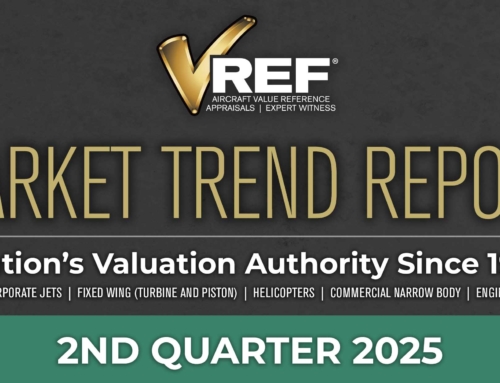This year has been a flash in the pan, and it’s hard to believe Thanksgiving is a week away. What a difference a year makes. To think it was all doom and gloom this time last year is almost hard to believe. While there are still many unknowns in terms of the global supply chain, inflation, interest rates, and the third pandemic winter, the one thing I can say for sure is general aviation is back. I remember when that was not even a thought; with all the cheap airline tickets and service to every part of the world, it was easy to forget how critical general aviation is to the economy. Today, I see the erratic behavior of passengers on commercial flights. It’s appalling and combines this with the number of political issues, labor problems, and pilot shortages of the airlines. It is easy to recognize that private air travel has a prominent place in the industry. For many passengers, it is a permanent shift as they will probably never return to the airlines.
The 4th quarter is a hectic time of year, especially for those in aviation. In normalized markets, the time between Thanksgiving and Christmas is the busiest time of the year, and it is not uncommon to see two to three times the number of valuations coming through our software. This, however, is not a regular market, and it appears as if “normal” years are in the rear-view mirror as the global economy shifts from pandemic to recovery. The current market is not only one of the tightest (hottest) I have seen in almost thirty years, but also one that doesn’t seem to be tied to any single aspect of the economy. Many factors influence the activity levels and the associated values that can make your head spin. Some of those factors seem obvious yet rarely written or spoken about in detail. For example, the number of aircraft being removed from service due to maintenance issues or lack thereof, accidents, and purely technical/functional obsolescence is hard to take in. There are days (more often the last 12-18 months) that I can count on not one but two hands the number of aircraft being removed from service. While this might not seem like a massive problem, it has a way of sneaking up and demanding our attention. It could have been mitigated had we not lost so many productive years after the great recession. This “lost decade” found its way into every R&D budget, and just about every manufacturer felt the burn at one point. Today we fast forward, and the hopes of offsetting the attrition rate with new aircraft deliveries is just that hopeful. While there will always be a segment of the aircraft purchasers who desire and pocketbook to buy a new aircraft, this will never be the majority. For most buyers, the value proposition and mission profile analysis are always at the mercy of a budget. There will always be a high use case for older aircraft until we see a technology-driven shift with alternative fuel or power plants. We take for granted that the great recession knocked down values well below what was justified. For the most part, those same models are only just now starting to see a plateau to deprecation or, in some cases, a word we have not spoken about since before 2008, appreciation.
The size of the fleet combined with the number of aircraft available is something we as appraisers use daily as a meter. It is something that VREF has been tracking offline for many years, and there is a direct correlation between the size of the fleet, the number for sale, its popularity amongst purchasers, and value. The more desirable an aircraft model is, along with specific features or avionics, can produce a long and frustrating situation if you are a buyer as your chances of finding one are slim and none. The scarcity this current market has made has, for obvious reasons, had a direct impact on values and the amount of money a buyer is willing to pay. It has also created an environment that can take advantage of first-time buyers and even seasoned aircraft owners. The hurry-up mentality, along with scarcity, is often a sour mix, a recipe for disaster. I mention this as I have noticed a trend in the current market forcing buyers to overlook logbook issues, missing records, damage history, and unknown back-to-birth traceability. The question that needs to be asked is, what if this market adjusts and is no longer hot? Buyers need to consider this as well and come to a conclusion if the transaction makes sense. Still, it is hard to argue when a buyer decides to pounce on the aircraft of their dreams even if it has issues, as there is no promise the next one to come up for sale will be better.
When is this market going to end? That’s the question everyone wants to get answered and one that I get asked a dozen times a day. While there is no crystal ball at VREF, we do have a ton of data, and based on that, we can see that not a whole lot has changed since my last market report. If anything, the market for certain classes has just gotten tighter. The number of available aircraft has, for the most part, continued to drop across the board. Typically, this time of year, we start to see a pause in the piston market, that is not to say transactions are coming to a halt, but instead, this is the time of year for maintenance and refurbishment, and spring 2022 is the year still a far way off.
For the first time in many years, VREF pushed a mid-quarter price update. This is something that in our new software we can do more often as we see fit. It is essential for all our subscribers that we maintain accuracy, and it is even more critical in a heated market like the one we have today. We are also going to be releasing several new features and improvements to the software. Amongst the highlights are the new Market Trend Data that will be released before year-end. It is light years beyond anything currently available, and we believe the new data will be well received as you will be able to see the ebb and flow of aircraft transactions like never before. VREF tracks more aircraft than anyone else; if you add up the aircraft model’s other data companies track, VREF tracks more than all combined. VREF subscribers produce an average of 20,000 valuations a month, up from 18,000 over the previous quarter. Another feature that I am personally excited about is our stand-alone engine database, and engine conversions are almost ready for deployment. As part of this update, you will be able to adjust the TBO on specific engines.
VREF 4th quarter values will be updated on November 29th, and we are forecasting little to no change in the coming months to the market. We expect the current market to stay the course for the foreseeable future.
I wish you are your family a happy holiday season, a happy and healthy New Year.





